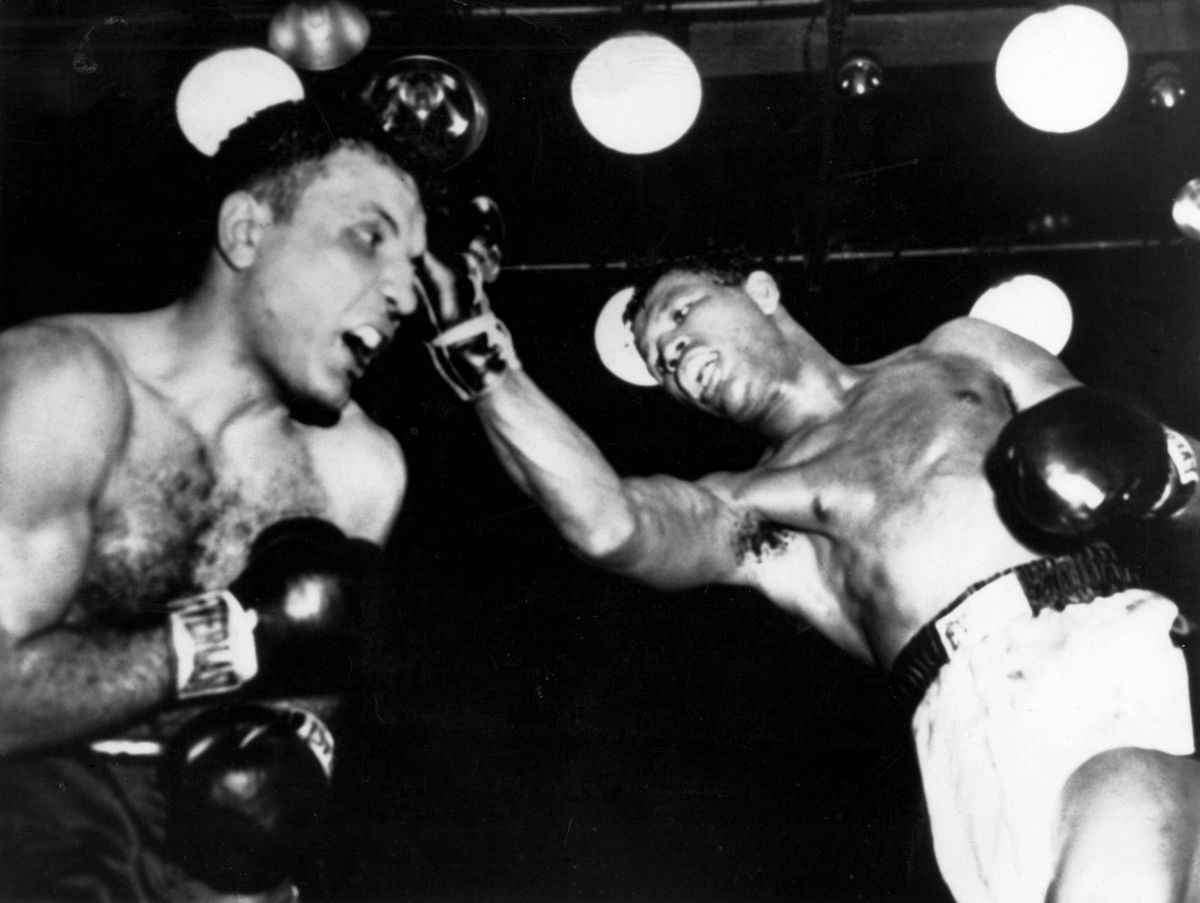
Imago
Bildnummer: 14521094 Datum: 31.12.2002 Copyright: imago/United Archives International Sugar Ray Robinson cuts loose in the thirteenth round of his fight with Jake La Motta in Chicago. Robinson won on this round on a TKO PUBLICATIONxINxGERxSUIxAUTxONLY UnitedArchives01004441; kbdig 2002 quer Boxer / Boxing Knock out Punch Image number 14521094 date 31 12 2002 Copyright imago United International Sugar Ray Robinson cuts loose in The thirteenth Round of His Fight with Jake La Motta in Chicago Robinson Won ON This Round ON A TKO PUBLICATIONxINxGERxSUIxAUTxONLY Kbdig 2002 horizontal Boxer Boxing Knock out Punch

Imago
Bildnummer: 14521094 Datum: 31.12.2002 Copyright: imago/United Archives International Sugar Ray Robinson cuts loose in the thirteenth round of his fight with Jake La Motta in Chicago. Robinson won on this round on a TKO PUBLICATIONxINxGERxSUIxAUTxONLY UnitedArchives01004441; kbdig 2002 quer Boxer / Boxing Knock out Punch Image number 14521094 date 31 12 2002 Copyright imago United International Sugar Ray Robinson cuts loose in The thirteenth Round of His Fight with Jake La Motta in Chicago Robinson Won ON This Round ON A TKO PUBLICATIONxINxGERxSUIxAUTxONLY Kbdig 2002 horizontal Boxer Boxing Knock out Punch
Stepping into the boxing ring isn’t just about throwing punches; it is also about understanding the language of the sport. The world of sweet science is rich with terms and slang that can seem like a foreign language to the uninitiated. Whether you’re a die-hard, casual follower, or someone just getting started, knowing the lingo is essential to truly appreciate a sport as old as boxing.
Watch What’s Trending Now!
This guide is an exercise in that direction. It is an attempt to take you through the most frequently used and significant terms. Whether you’re watching a title clash or discussing the nuances of the latest match with friends, it could give you the essential insights you need if you wish to talk like a pro.
ADVERTISEMENT
Slangs used for boxers and cornermen
Bleeder: If a boxer tends to suffer cuts or lacerations more frequently during fights, then he is referred to as a ‘bleeder’. The situation could be disadvantageous since it might lead to a referee calling for an early stoppage of the fight.
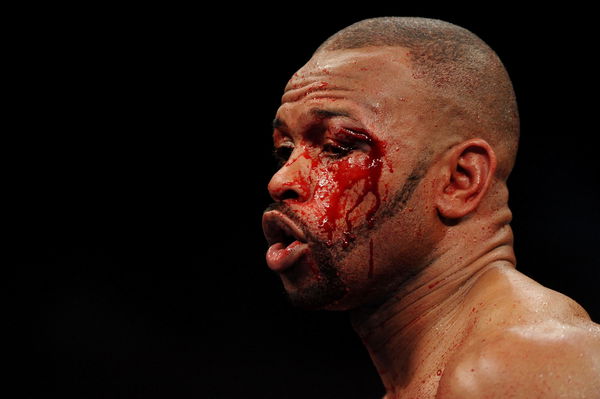
Getty
NEW YORK – NOVEMBER 08: Roy Jones Jr’s wound bleeds down his face while fighting against Joe Calzaghe of Wales in their Ring Magazine Light Heavyweight Championship bout at Madison Square Garden November 8, 2008 in New York City. (Photo by Al Bello/Getty Images)
Brawler: That’s a boxer who thrives on aggressive, close-range fighting. They are often willing to take punches so that they can make their own. Often, instead of relying on technical skills, ‘brawlers’ prefer overwhelming their opponents with relentless pressure and power.
ADVERTISEMENT
Chief Second: At the time of a fight, the trainer responsible for the boxer’s corner is called a ‘Chief Second’. Usually, they give instructions, take care of the strategies, and provide necessary care in-between the rounds.
Top Stories
Floyd Mayweather Faces Threat of Losing Post-Boxing Empire as 8-Figure Debts Mount: Report

Anthony Joshua Discharged From Hospital as Police Arrest Driver Over Fatal Car Crash in Nigeria

“Rest in Peace”: Condolences Pour In as Legendary Coach Freddie Roach Mourns Personal Loss

Jake Paul Faces Another Setback as WBA Drops Him After Anthony Joshua Knockout Loss

Floyd Mayweather Breaks Silence as $402M Real Estate Deal Goes Allegedly Wrong

Second: It is a term used for one of the team members in a fighter’s corner who assists in-between the rounds. Apart from offering advice, often they support the fighter with any necessary care during a fight.
ADVERTISEMENT
Cutman: A very crucial member of a boxer’s corner. They primarily focus on minimizing the effects of cuts, abrasions, or swellings. The way a ‘cutman’ addresses injuries often translates to a boxer continuing in the fight or the fight itself getting stopped.
Fringe Contender: Essentially, that’s a fighter, on the fringes of contention. What that literally means is that the fighter is currently low-ranked and not widely recognized. However, on account of strong performances, they are on the verge of breaking into the higher echelons. Nevertheless, they are far removed from posing a threat to the title holders.
Gatekeeper: A ‘gatekeeper’ serves as a test for title contenders. They themselves may not be running for a championship belt. However, beating them is a key step for other fighters to prove that they belong among the top competitors in the weight class.
ADVERTISEMENT
Prizefighter: That’s essentially a professional boxer who fights for monetary benefits. It is one of the best terms to emphasize both the competitive as well as the financial aspect of boxing.
Shopworn: This type of fighter would have experienced significant wear and tear from many fights. The cumulative damage often leads to diminished physical and possible mental conditions over time.
Glass Jaw: That’s basically a boxer vulnerable to getting knocked out. The term indicates that the fighter cannot absorb a strong punch well, thus getting stopped early without a hitch.
ADVERTISEMENT

Imago
Creator: Ellen Schmidt
Credit: AP
Copyright: AP:Associated Press
Headhunting: it could be called a strategy wherein a boxer primarily targets their opponent’s head, but often at the expense of body shots. It could be a risky proposition since chances are a smart opponent might anticipate it well and launch effective counters thereafter.
Mauler: Focusing on physicality and intensity, a ‘mauler’ overwhelms their opponents in close quarters. Using aggressive and sometimes unconventional tactics, they aim to disrupt the opponent’s rhythm, making it difficult for them to execute their own strategy.
ADVERTISEMENT
Plodder: Lacking speed, a ‘plodder’ is a fighter who displays heavy, deliberate movements. Their tendency to move forward slowly, at a steady pace, makes them predictable for opponents. Often it becomes a daunting task for them while facing nimble foes who move around the ring.
Puncher’s Chance: Skill-wise, a fighter may be inferior; he might have that ‘puncher’s chance’ to score a knockout with a single punch. They would have been outperformed during a fight; however, they have the power to snatch victory from the jaws of defeat.
Stablemate: Fighters often end up as ‘stablemates’ when they train in the same gym. As it often happens, they might be managed by a common promoter. They could be supporting each other in the gym. But it doesn’t mean that there won’t be any face-off between them if ever their career progresses to that point.
ADVERTISEMENT

ADVERTISEMENT
Trial Horse: So how do you test a rising prospect? Simple—you put them against a ‘trial horse’, a fighter who will provide a challenging but manageable test to help assess if the up-and-coming fighter is ready for more significant competition. They are usually resilient and may present an effective scrutiny. But, as it happens, they often end up losing the bouts.
Boxing terms for punches
Below the Belt: Considered illegal in boxing, that’s a punch that lands on a body part, below a boxer’s trunk waistband. It generally leads to the errant fighter being handed down either a warning or a point deduction by the referee.
Bolo Punch: Borrowed from the Filipino word for a machete, ‘bolo’, it is a punch wherein the sweeping motion basically resembles the way one would swing a machete. Used for distracting an opponent to later set up a direct strike; in many ways, it combines a hook with an uppercut. Kid Gavilan and Sugar Ray Leonard are some of the well-known exponents of the punch.
Check Hook: It is a strategic counterpunch in boxing. Thrown like a conventional hook, it involves a boxer pivoting from the central line of an attacking foe while delivering the hook. The key to a successful ‘check hook’ is timing. It catches the opponent off guard as they lunge forward.
Corkscrew Punch: Launched with the objective of causing a cut on the opponent’s face, a ‘corkscrew punch’ involves a twisting motion with an arching, overhand trajectory. The rotation of the fist just before the impact adds extra force to the punch. On account of a serious cut, a fight could end up in an early stoppage.
Counterpunch: A ‘counterpunch’ is nothing but a direct response to the opponent’s attack. Essentially a defensive technique, the boxer waits for the opponent to strike. When the latter commits, it exposes their position. So taking advantage, the boxer then promptly throws his punch to catch the foe off guard. Floyd Mayweather is arguably the greatest proponent of the counterpunching.
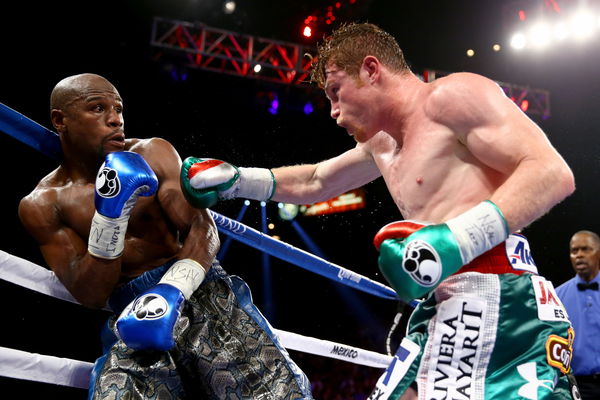
Getty
LAS VEGAS, NV – SEPTEMBER 14: (R-L) Canelo Alvarez throws a right at Floyd Mayweather Jr. during their WBC/WBA 154-pound title fight at the MGM Grand Garden Arena on September 14, 2013 in Las Vegas, Nevada. (Photo by Al Bello/Getty Images)
Low Blow: It is a punch that typically lands on areas such as the lower abdomen or the groin, below the waistband of a boxer’s trunk. An illegal strike—it could result in penalties such as issuance of warnings, point deductions, or sometimes even a disqualification. The trunk waistband remains a typical marker. but there’s the referee’s interpretation as well. They do so by establishing an ‘imaginary line’, usually around the level of the hips or naval, as the boundary for legal punches.
Paw: Typically done with the lead hand, ‘pawing’ is not a punch but the act of throwing a punch. In fact, there’s little intent to actually land the blow. It is actually a probing move to gauge distance and test the opponent’s reactions. More often than not, it helps in setting the base of a following punch.
Pull counter: It is a technique that displays the timing and anticipatory skills of a boxer. In ‘pull counter’, a fighter moves back sufficiently to avoid an opponent’s jab. Then, while staying within the range, they promptly counter with a powerful cross.
Pull Your Punches: It’s a deliberate move wherein the force of a punch is kept in check. In sparring sessions, boxers follow the principle to keep the intensity of the exchange tempered. But then, in a professional fight, a boxer might use the technique as a tactic to lure the opponent into a sense of safety. Just when the latter lets their guard down, the boxer delivers a powerful punch out of the blue.
Rabbit Punch: The term borrows from the way hunters historically targeted rabbits. It is an illegal punch, considered dangerous because it is aimed at the back of the opponent’s head; the ‘rabbit punch’ is prohibited. It is extremely dangerous and repeated blows to a boxer’s lower head can lead to serious repercussions as in the tragic case of rising boxing star, Prichard Colon.

Imago
Prichard Colon in-ring
Sucker Punch: It is a punch thrown when the opponent isn’t expecting it, often hitting after the bell has rung, making it unfair and unexpected.
Shoe Shine: It is a fancy word wherein a fighter unleashes a series of fast punches. For viewers, they might appear splendid, but it would have barely caused the opponent any hurt.
Jargon for different moves and tactics in boxing
Accidental Butt: It happens when the heads of two fighters collide unintentionally. Both fighters are cautioned to be careful once the referee notes that they didn’t do it on purpose.
Ali Shuffle: It is the boxing footwork wherein feet shift back and forth quickly. Popularized by none other than ‘The Greatest’ Muhammad Ali, apart from confusing the opponent, it is often used to display agility.
Backpedal: Backpedaling happens when a boxer moves further off the opponent. But he does so while facing the adversary lest they go on the offensive.
Bob and Weave: Best exemplified by great ‘Smokin’ Joe Frazier, in this defensive technique, the boxer moves side-to-side or adopts a circular or semi-circular step to dodge incoming punches.
Body Work: It is a strategy where a boxer targets the central part of the opponent’s body. Aiming the stomach, ribs, and lower chest helps the boxer take the adversary apart gradually.

Imago
(Original Caption) Joe Frazier (right) crouch’s and lands a right to the stomach of Muhammad Ali in bout here January 28. Ali won unanimous decision in the 12-rounder. Both fighters wear white trunks; the ropes are blue and their gloves are wine-red.
Caught Cold: The term comes into play when a boxer is either knocked out or hurt early in the bout. This usually happens when the boxer is not yet ready for the fight, either mentally or physically.
Cover-Up: In this defensive maneuver, the boxer shields themselves with their gloves to block the opponent’s incoming punches.
Dive: When a boxer intentionally loses a fight. It could be on account of either financial gain or some external pressure that the boxer goes down from a punch that wouldn’t normally knock them out.
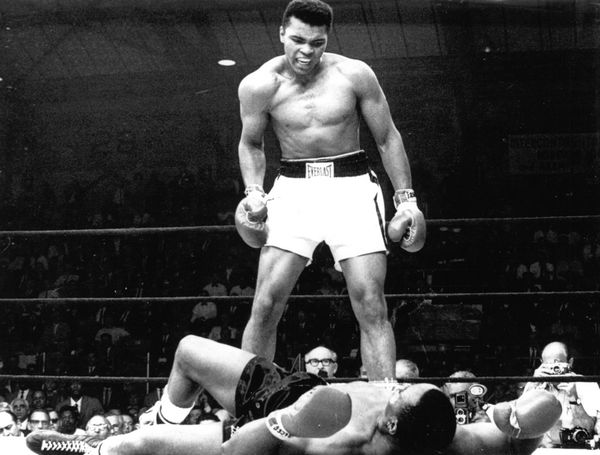
Imago
PALUPI Muhammad Ali Cassius Clay in the boxing ring standing over Sonny Liston 1965 PUBLICATIONxINxAUSxGERxSUIxONLY Copyright: xTopFotox Sp000451
Duck: A defensive move where a boxer lowers their head and upper body to avoid a punch.
Flash Knockdown: A fleeting knockdown. The boxer is knocked off their feet but recovers quickly and moves. The whole sequence winds up even before the referee starts a full count.
Infighting: A boxing style where the boxers engage at very close range. They use body shots and uppercuts to neutralize the adversary.
On the Ropes: A boxer is ‘on the ropes’ when they are backed up against the ropes of the ring. Often in a defensive position, they are either at risk of being trapped or have been completely overwhelmed by the opponent’s attacks.
Peek-A-Boo: A boxing style heralded by legendary trainer Cus D’Amato. With their elbows tucked in, the boxer keeps their gloves up close to the face. Then he moves the upper body at a fast pace, side to side. The maneuver helps them protect their faces while lending space to launch swift counterattacks. One of the greatest practitioners of the style was ‘Iron’ Mike Tyson.
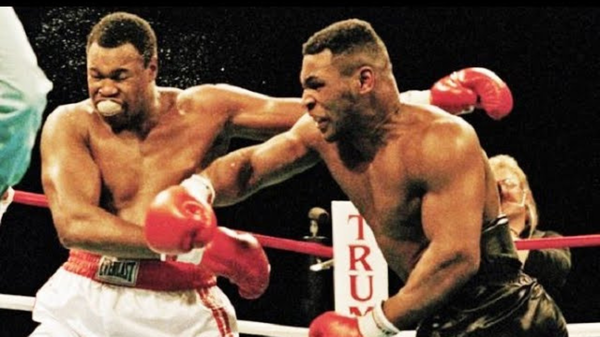
Picking-off Punches: Using their gloves, the boxer employs the defensive technique to either block or deflect the opponent’s punches. The movement is precise and well-timed, preventing the punches from landing altogether.
Play Possum: The boxer deploys the tactic by pretending to be hurt or fatigued than they actually are. The objective is to tempt the opponent into lowering their guard. Once that happens, the boxer moves in with a surprise counterattack.
Roll with the punches: The boxer moves in the same direction as an incoming punch. It lessens the impact of the blow.
Roughhousing: When a boxer resorts to aggressive, often borderline illegal tactics in the ring. By pushing, holding, or hitting on a break, a fighter tries to frustrate the opponent.
Shifting: The boxer switches stances while moving forward, from orthodox to southpaw and vice versa. The offensive technique often catches the opponent by surprise, as it provides the boxer with better angles for punches.

Getty
LAS VEGAS, NEVADA – JULY 29: Terence Crawford and Errol Spence Jr. exchange punches during round nine of the World Welterweight Championship bout at T-Mobile Arena on July 29, 2023 in Las Vegas, Nevada. (Photo by Al Bello/Getty Images)
Roadwork: It is the running and jogging that boxers do as part of their training to build stamina, endurance, and overall conditioning.
Stick and Move: A boxing strategy where the boxer focuses on landing quick, precise punches, i.e., sticking, and then they move away and change positions to avoid the counterattack. Throughout the fight, the boxer maintains distance and control.
Other technical terms in boxing lingo
Catch-Weight: It is a fight where both boxers agree to a specific weight that doesn’t fit into the usual weight class or division. Last year’s Ryan Garcia versus Gervonta Davis is one such example where the bout was fought at 136 lbs.
Mouse: Typically caused by a punch, it is a localized swelling on a fighter’s face.
Neutral Corner: The two ‘white’, non-occupied corners of the ring. The fighter is redirected to the ‘neutral corner’ during the opponent’s knockdown count. The boxers could also be sent to the ‘neutral corners’ when the referee has to perform other requisite duties.
Punch Mitts: Foam pads worn by a trainer on their hands to give a boxer specific targets to strike. They help simulate an opponent’s moments. They are used to refine skills by allowing boxers to practice punches and combinations.

Getty
LAS VEGAS, NV – JULY 25: Floyd Mayweather trains at his gym on July 25, 2013, in Las Vegas, Nevada, in preparation for his fight with Saul Alvarez, a Mexican boxer known as El Canelo. Here he spars with his uncle Roger Mayweather. (Photo by Benjamin Lowy/Getty Images)
Doctor Stoppage: It happens when the sanctioned ringside physician concludes that one of the fighters is too injured to continue safely. For instance, Joe Joyce versus Zhilei Zhang, April 15, 2023.
Down and Out: A boxer is knocked down and unable to get back up even before the referee counts to ten, resulting in a knockout loss.
Enswell: It is a metal tool, often kept cold, used by a cutman to reduce swelling on a boxer’s face during a fight.
Gate: The term is used for the total amount of money earned from ticket sales for a boxing event from the venue where it is held.
Get Off: A boxer ‘gets off’ when they launch an effective offensive attack, throwing punches without any hesitation.
Knockdown: A knockdown is considered when a boxer is hit and drops on the canvas—either his gloves or knees have touched the floor. However, they get up before the referee’s count of 10.
Knockout: A knockout is scored when one of the boxers is pushed to an unconscious state. They are unable to stand after a knockdown. Finally, they are unable to continue with the fight within the count of ten, primarily on account of some physical inability. Overall, it is an immediate loss for the fighter.

Getty
RIYADH, SAUDI ARABIA – MARCH 08: Anthony Joshua punches Francis Ngannou during the Heavyweight fight between Anthony Joshua and Francis Ngannou on the Knockout Chaos boxing card at the Kingdom Arena on March 08, 2024 in Riyadh, Saudi Arabia. (Photo by Richard Pelham/Getty Images)
Punch Oneself Out: It usually happens when a fighter expends too much energy throwing punches. It eventually leads to fatigue and a watered-down performance later in the fight.
Purse: Usually agreed upon before a match takes place, it is the money a boxer receives for participating in a fight.
Referee Stoppage: A referee may consider stopping the fight early if they find a fighter unable to continue. They may reach the decision primarily on account of safety concerns such as serious injury or simply finding the fighter outmatched.
Retired on Stool: A boxer may ‘retire on the stool’ when they decide not to proceed with the fight any further. Mostly on account of injuries, exhaustion, or some other reason, they do not come out for the next round.
Rubber Match: Basically a tiebreaker to determine the superior boxer. It usually happens during the third match, i.e. the trilogy, after the boxers have each won one fight against each other.
Saved by the Bell: A boxer could be ‘saved by the bell’ when they are in trouble, about to be knocked out. However, the round ends before they could be finished off.
Seconds Out: Indicating that the next round is going to start, the referee directs all trainers and cornermen to leave the ring, i.e., all ‘seconds should go out’. Failing to do so might invite punitive action against the fighter.
Technical Draw: A fight may end early sometimes. Instances such as accidental injuries make it difficult for the match to continue. Hence, the fight is stopped and declared a draw.
Technical Knockout: A boxer may end up winning a fight via a ‘technical knockout’. Upon observing that the opponent may be unable to continue, even in the instance that they have not been knocked out, either the referee, ringside doctor, or even the corner may take the call, stopping the fight.
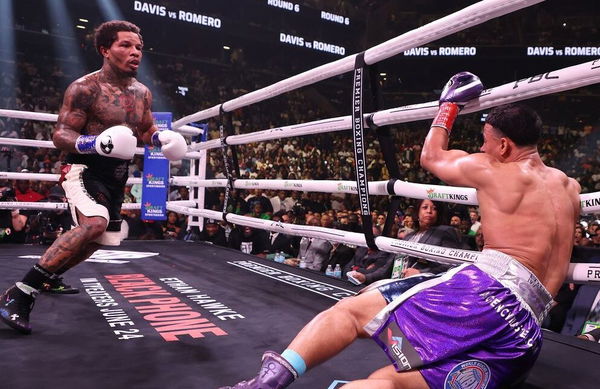
Lineal Champion: ‘The man who beat the man’. A way to identify the top dog of the weight division, the recognition as a true champion is awarded when a fighter defeats the incumbent title holder, who in turn secured it from the one before, so on and so forth. Thus, a direct lineage of champions is established.
Alphabet Groups: It refers to the major organizations that sanction world championship fights and award title belts. Under the four-belt era, the most prominent ones include the WBC, WBA, WBO, and IBF. Given each group has its own rankings, rules, and championships, this explains the reason why there are multiple world champions in the same weight class.
Title Unification: A boxer becomes a ‘unified’ champion when they win two or three titles in the weight class. It is just a step short of the undisputed championship.
Undisputed Champion: Fundamentally means there’s no longer any ‘dispute’ over who is the ultimate champion of the division. In the four-belt era, a boxer becomes an ‘undisputed champion’ when they have won all the titles from the four sanctioning bodies, i.e., the WBC, WBA, WBO, and IBF.
ADVERTISEMENT
ADVERTISEMENT
ADVERTISEMENT

